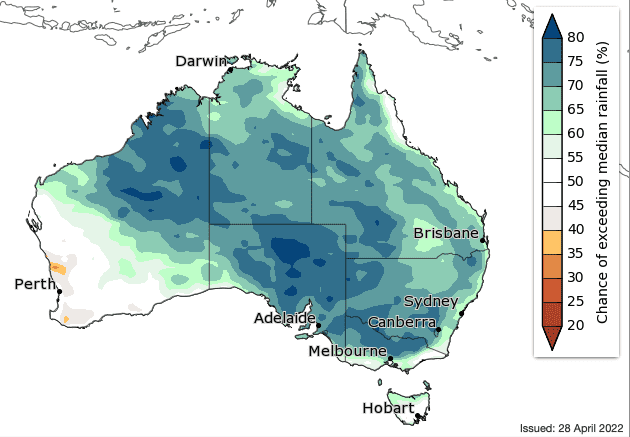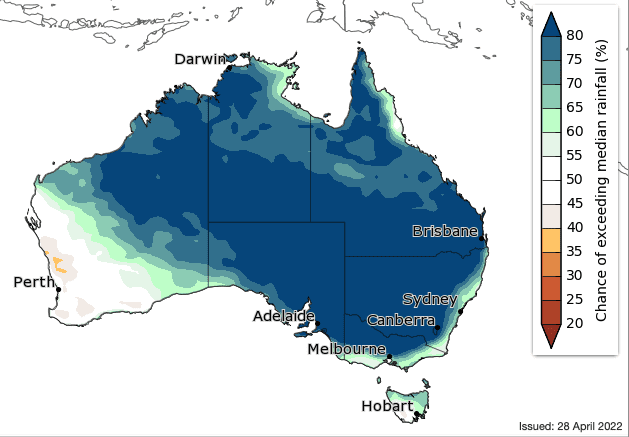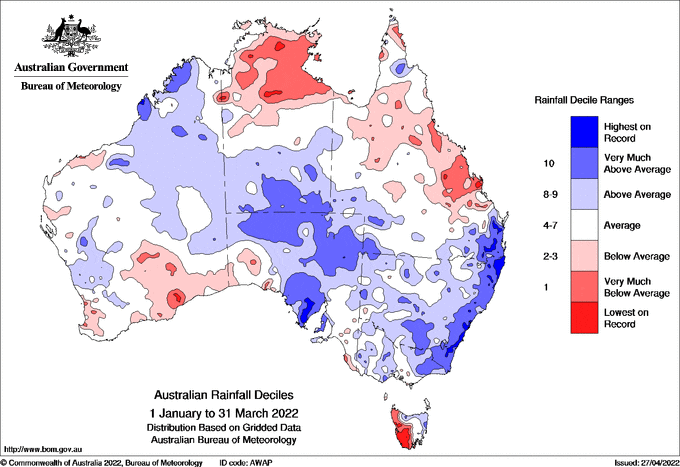Warmer May to July days for north, and far south-west and south-east, cooler for inland central and southern Australia
May to July maximum temperatures are likely to be above median for the northern tropics, south-west WA, south-east NSW, southern and eastern Victoria and Tasmania (greater than 60% chance). Below median maximum temperatures are likely for much of central WA, the southern NT, SA, southern Queensland, inland NSW, and northern Victoria (chance of exceeding the median is less than 40pc).
There is an increased chance of unusually high maximum temperatures (in the top 20pc of historical records) for May to July over the far south-west and northern WA, the northern NT, northern Queensland, eastern Victoria, and Tasmania (1.5 to greater than 4.0 times the usual chance), with the highest chances in far northern Queensland. Conversely, there is an increased chance of unusually low maximum temperatures (in the bottom 20pc of historical records) in a broad area stretching from the Pilbara coast in WA, across SA and the southern NT and into western and central parts of southern Queensland, NSW and Victoria (1.5 to 3.5 times the usual chance).
Minimum temperatures for May to July are likely to be warmer than median Australia wide (chances are greater than 60pc), with most areas very likely to be warmer (chances are greater than 80pc).
There is an increased chance of unusually high minimum temperatures (in the top 20pc of historical records) for May to July across virtually all of Australia (1.5 to greater than 4.0 times the usual chance). The highest likelihoods are across the northern tropics and north-eastern SA extending into the southern NT.
Past accuracy for May to July maximum temperatures is high to very high for most areas of Australia, with moderate accuracy across the south-east NT and northern Tasmania. For minimum temperatures, accuracy is high to very high across northern Australia, grading to low to very low accuracy across southern parts of the mainland. Tasmania has moderate accuracy for minimum temperature.









HAVE YOUR SAY